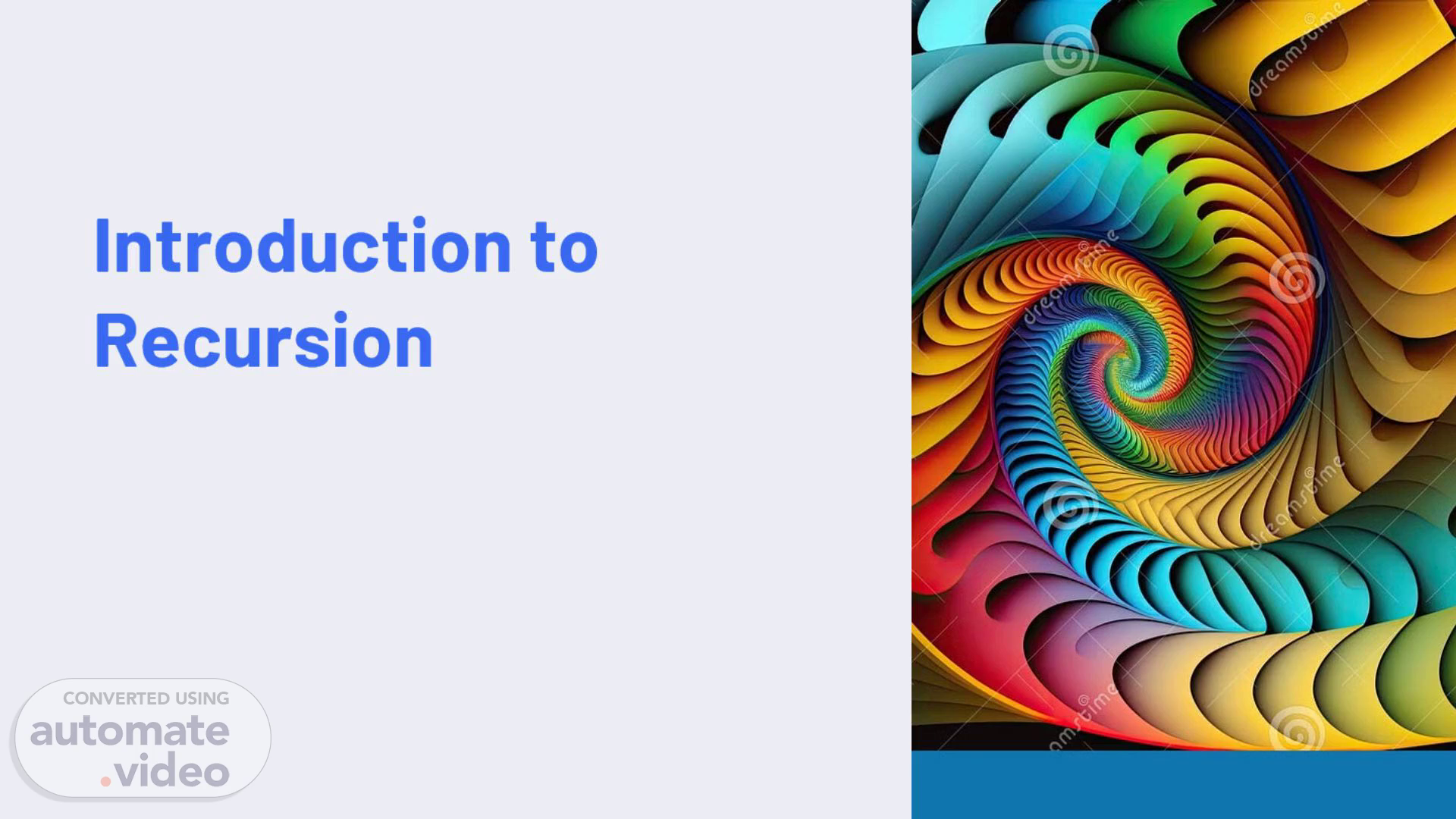
PptxGenJS Presentation
Scene 1 (0s)
[Audio] Recursion is a potent programming notion that enables us to address intricate problems by dividing them into smaller more manageable sub-problems. It functions by permitting a function to refer to itself making it possible for the issue to be split into even more granular portions. This assists in simplifying the solutions to issues and making them simpler to manage..
Scene 2 (21s)
[Audio] Recursion is a powerful problem solving technique that breaks down complex problems into smaller sub-problems. To use this technique one must proceed step-by-step acknowledging the base case and repeating the process until the base case is met. This repetition enables the function to solve the problem..
Scene 3 (41s)
[Audio] Recursion is a powerful tool for programming comprising two key concepts; the Base Case and the Recursive Case. The Base Case is the simplest case in which the function can solve the problem without further recursion. The Recursive Case is where the function calls itself with a smaller version of the initial problem. These two cases form the Stopping Condition at which point the recursion halts and a result is returned..
Scene 4 (1m 7s)
[Audio] A recursive function has a structure that first checks if the problem has reached the base case. If it has the function returns the result for the base case. Otherwise the function calls itself and breaks the problem into a smaller sub-problem repeating the process. By doing so complex problems can be broken down into smaller more manageable sub-problems. The function then returns the combined result of the base case and the recursive calls..
Scene 5 (1m 32s)
[Audio] Recursion is a powerful programming technique that involves breaking down complex problems into smaller and more manageable ones. It has several distinct advantages compared to non-recursive solutions. It often offers an elegant and concise solution compared to iterative approaches. It is also better suited for dealing with complexity by breaking problems down into more tractable sub-problems. Furthermore memory efficiency is also one of the benefits of recursion since recursive algorithms can be more memory-efficient than iterative solutions in certain circumstances..
Scene 6 (2m 8s)
[Audio] Recursion can be a useful way to solve intricate programming issues however there are certain restrictions that come with it. Excessive memory consumption and the potential of a stack overflow error are two such instances. Additionally when employing recursion it is important to accurately specify the base case in order to avoid creating an infinite loop. Recursive methods can also be less efficient than iterative solutions for some problems..
Scene 7 (2m 37s)
[Audio] Recursion is a technique of programming which utilizes a function to call itself to break down complex problems into more manageable sub-problems. Examples of algorithms utilizing recursion are factorial Fibonacci sequence and binary search. It is important to note that recursive calls of a function can initiate additional recursive calls..
Scene 8 (2m 58s)
[Audio] Recursion is a powerful programming technique which makes it possible to break down complex problems into smaller simpler sub-problems. To use this technique we need to create a function which calls itself. To comprehend this concept better let us observe some examples. For instance we can use a recursive function to work out the factorial of a number in Python. Similarly in JavaScript we can calculate the Fibonacci number with a recursive function. Moreover in Java we can use binary search to look for a target number in an array. These are just some examples of how recursion can be applied to solve complicated programming issues..
Scene 9 (3m 35s)
Sample Recursion Code.
Scene 10 (3m 41s)
Thank You!!!.